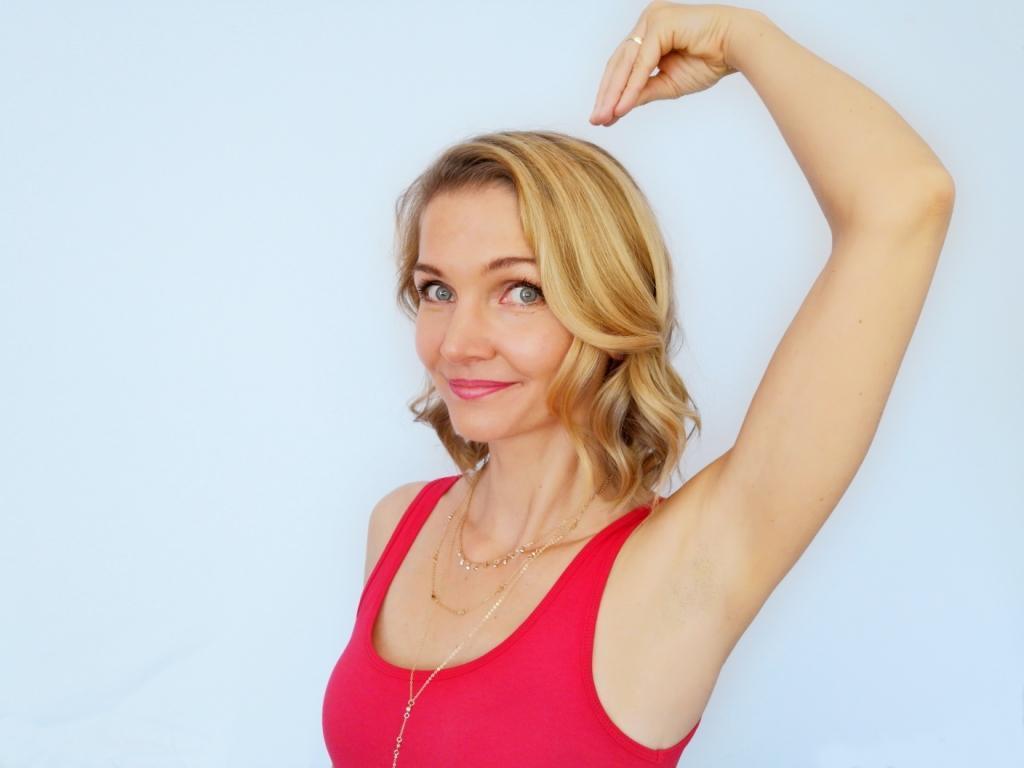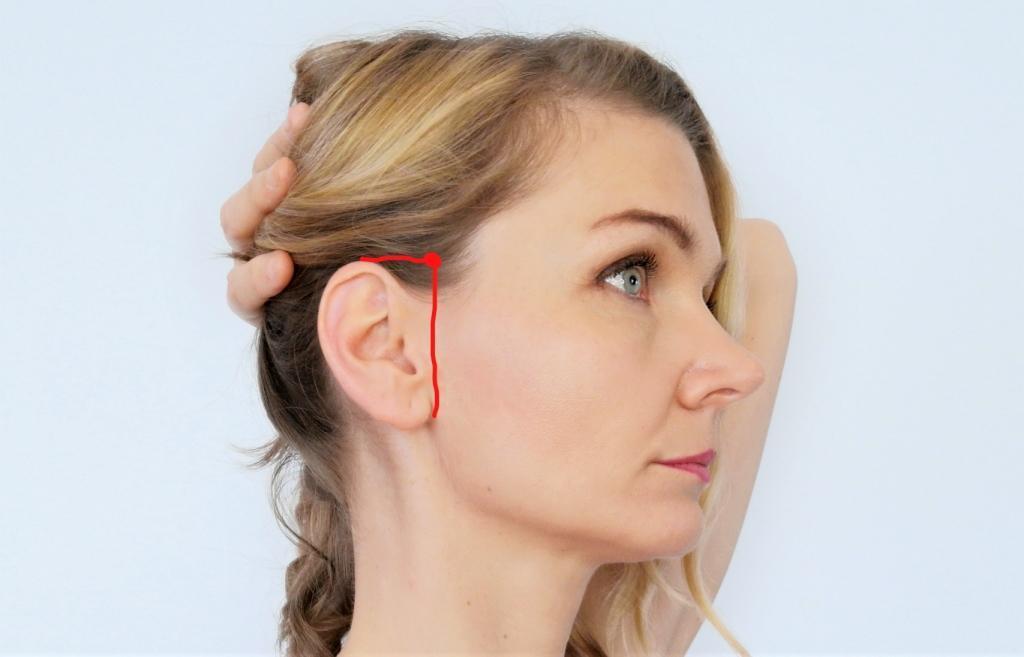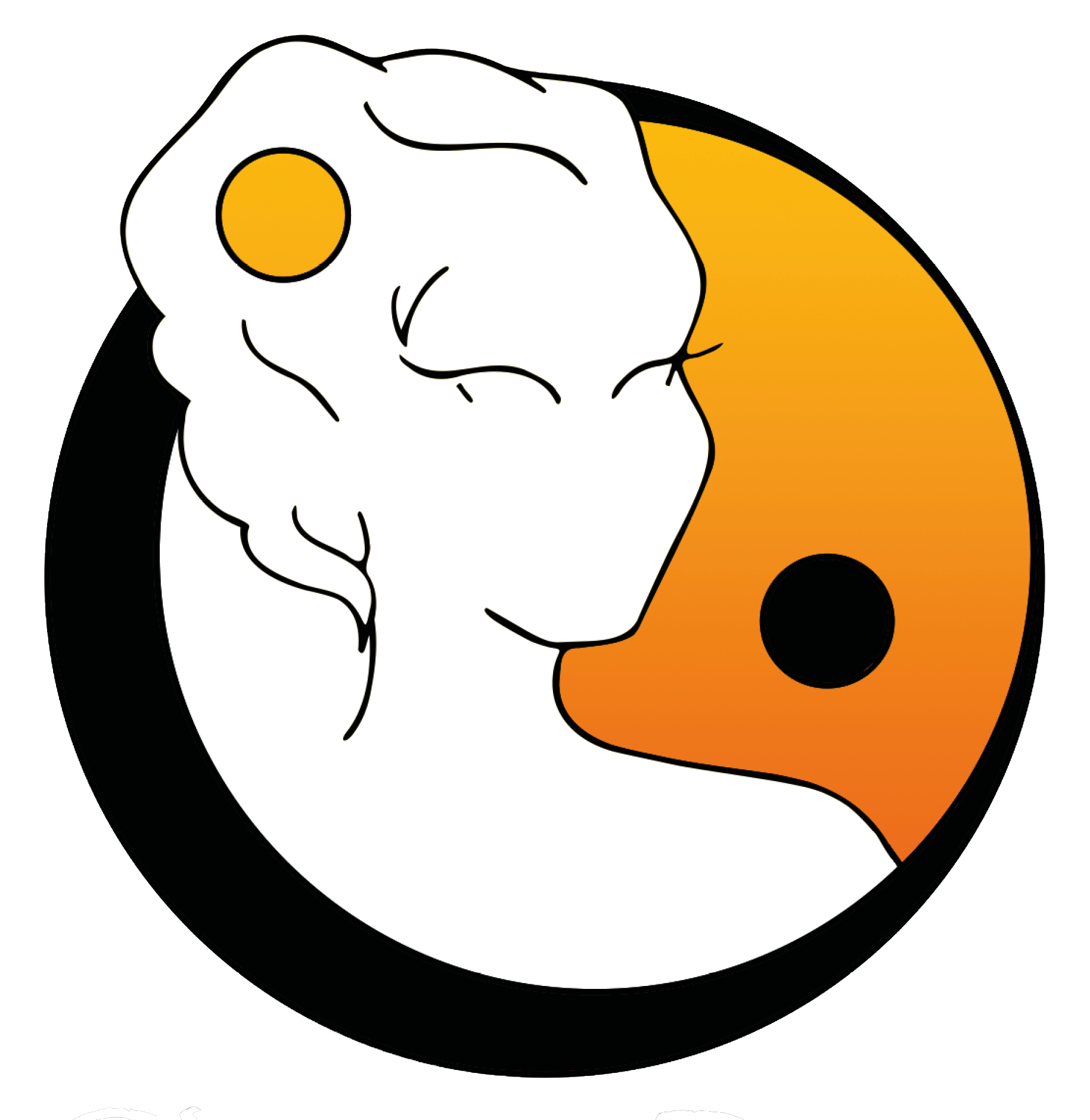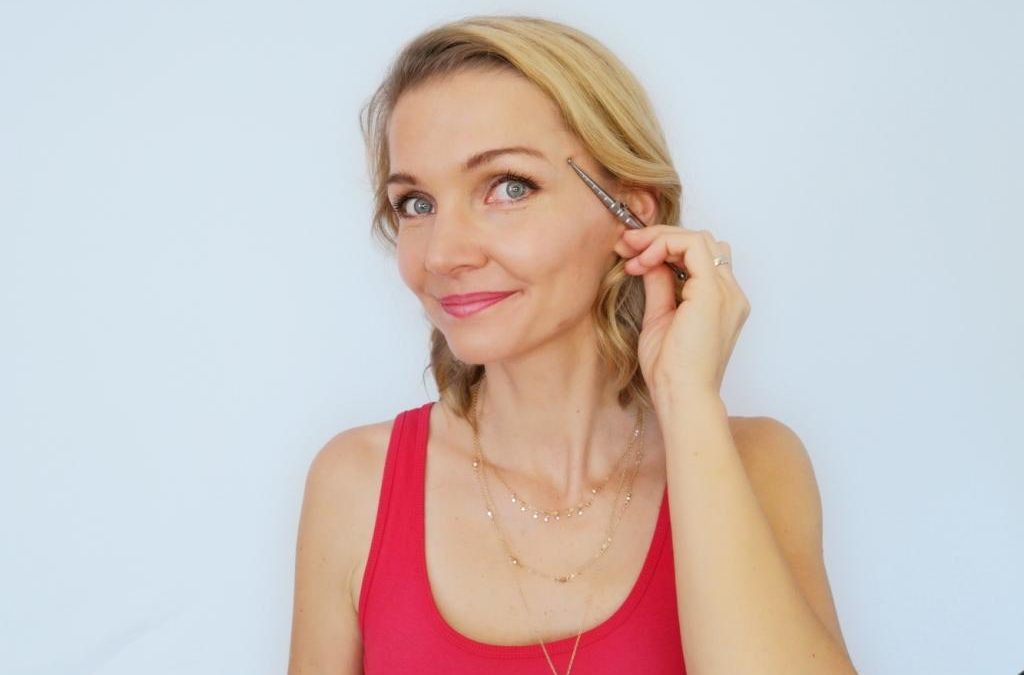Eye wrinkles are one of the most visible signs of ageing, as we usually look people in the eye. However, they are not always just to do with age and the ageing process. This area of the face harbours some exciting secrets. After all, eye wrinkles also have a lot to do with our emotional state and can disappear again when this improves. In addition, crow's feet are often due to our lost ability to orientate ourselves according to our hearing and wiggle our ears. Are you curious? Then today's article is for you.
As a bonus, at the end of the article you will also find a Video. Believe me, you'll want to see what I'm talking about.
Smile lines and crow's feet

Firstly, I would like to clarify the difference between laugh lines and crow's feet. When you laugh and wrinkles appear around your eyes, these are laugh lines. They disappear again when you stop laughing. Crow's feet are always there. They are, so to speak, the engraved laugh lines. That's why some people say that crow's feet show that they've laughed a lot in life. Hm. Yes and no. Because crow's feet also show something else, as you will learn today.
You. Must. Drink!
The skin around the eyes is naturally very thin and therefore prone to wrinkling. Proper care of this area is simply very important. But I'm not going to tell you here to get enough sleep and eat right, yawn. But I wanted to remind you what I can tick off with this 😉 Drinking is even more important. The eye area reacts almost directly to your thirsty periods. If you want to prevent or reduce crow's feet, you need to be really well moisturised and well rested. All clear? Get to bed in good time and always start the day with a glass of lukewarm water. Use sun cream. You can't say this often enough.

The discovery of a sleeping muscle
You can read the tips on proper care everywhere. They don't go far enough. As always, we will work our way into the deeper layers. After all, I'm a facial yoga expert. So let's start by looking under the skin and find a muscle that some people call superfluous. We hardly move it at all. It's the muscle at the temple. We only use it when we wiggle our ears - in other words, never really.
Ears like a quail dog
I think at that moment, some of you reading this were trying to wiggle your ears. Well, did it work? Through my courses, I would make an amateurish statistic that about a quarter to a third of people are able to do this, although theoretically we all could. In times of sabre-toothed tigers, our ears were important safety organs and orientation instruments. We orientated ourselves much more by our hearing and it is possible that back then we were even able to tilt our ears like some animals.

A mini-lift with the right training
The ability to wiggle the ears appears to prevent and alleviate crow's feet. Deep crow's feet can indicate a totally inactive muscle with severe imbalances. Therefore, we will try to bring this muscle back to life. This doesn't just help with crow's feet. This muscle pulls the scalp backwards and thus tightens the entire upper part of the face. At the same time, we train the occipital muscle, which, when it is firmer again, has a mini-lifting effect on the face.
Exercise 1
From experience, I would say that it makes more sense to start by moving the occipital muscle. We can feel it better and the temporal muscle automatically joins in. What we want to achieve is for the scalp to contract backwards. Imagine that a thread is pulling your scalp upwards at an angle at the back of the crown of your head. Try to let your ears move diagonally upwards as well. They will do this almost automatically. If you find the exercise difficult, do it mentally first. Rely on your muscles to follow your imagination at some point. You can also place your fingers on your temples and ears and try to create a movement with the underlying muscle. Enjoy every little pulsation and try to develop this skill further.

Variant: Mental ear wiggling
There are some facial yoga exercises that you do mentally first. So if this concept seems strange to you, don't worry, it works. Because it requires mental strength and conviction, I find it helpful to recommend this Spiegel article to you: Thoughts make the muscles grow. Personally, I think there are still unimagined possibilities in this area, especially for facial yoga, which I will definitely take a closer look at and experiment with. For us, however, it is important to know that we are trying to train a muscle that may have been lying dormant for decades. So if you can't move your ears from the spot, mental training is the way to go.
Variant: Detour via forehead exercise
You may also be able to work on your feeling in this area by doing the following forehead exercise: place your palms on your forehead so that your index fingers are at the hairline. Press them firmly against your forehead. Now push your forehead downwards and move your eyebrows upwards against this pressure. Feel the small movement that occurs on the back of your head as a side effect. This exercise allows you to reach the occipital and temporal muscles in a roundabout way, so to speak. If you can then move it without help, you can wiggle your ears for all they're worth. People who can wiggle their ears have fewer wrinkles at the corners of their eyes.

Body's own filler
Another way to combat crow's feet is to plump up the area next to the eye. A rogue who thinks evil here, of course not with silicone, hyaluronic acid or anything else that puts a strain on our body. Healthy beauty and respect for the body are mandatory on my website. We increase the volume of the eye ring muscle in the area next to the eye. Through honest training, of course. And the following exercise is the best way to do this:
With facial yoga & Asian massages for firm skin
Before we get started, here's a little tip. The muscles in the face are closely connected and it therefore makes sense to do individual exercises. If you want to get things done, get yourself a good facial yoga programme and incorporate these exercises into it. Facial yoga costs me 7 to 10 minutes a day. I do it in the morning directly after applying cream, once the cream has been absorbed (otherwise my hands slip). It revitalises, removes puffiness and the skin is well supplied with blood. Years ago, I was able to eliminate my frown lines and firm my face as a whole. When I laugh, I have laugh lines. When I'm not laughing, my face is smooth.
Click on the image to go to the online course
I am 44 years old and have my best face now. So if you would like to build on my years of experience, I can offer you my Online course to your heart. You will also learn Asian anti-wrinkle massages such as Cupping, scraping and reflex massage. Beauty the natural way brings an unimagined sense of well-being and satisfaction with yourself!
Exercise 2:
And now for our exercise: place your middle finger on both sides of the outer end of the eye. The index finger is next to it and is pressed against the skin a little more firmly than the middle finger. Now pull the outer corner of your eye outwards very slightly, really only slightly, so that your eyes are drawn out a little. Now try to squint your eyes slightly as if the light is blinding you. You are contracting the eye ring muscle, so to speak. Your fingers hold the resistance against which your eye ring muscle has to work. This resistance not only makes your muscle firmer, but also increases its volume, precisely in the area where we want it to be.

You can do a lot against crow's feet with these exercises. Don't forget that the skin in this area is very thin, so be careful. You should not pull and tug, it is enough to create a slight pulsation.
Face - the map of our soul
I find it exciting to look at wrinkles from a psychological perspective. Our face is an important means of communication, it expresses our feelings and emotions, which can be "immortalised" in the form of wrinkles. Viewed from this perspective, our face is a map of our soul. I don't presume to be able to read it; thanks to my profession as a psycho-kinesiologist, I am much better at recognising the body language and energy of the person opposite me. But there are experts who can tell a lot from the drawings on your face. What do they read from the crow's feet?
Conscious and unconscious emotions create wrinkles
The muscles in our face are subject to the expression of our emotions. We don't always have to be aware of these emotions. My frown lines (which I with my methods I was a worried person without even realising it. The fact that conscious emotions are engraved on our faces in the form of facial wrinkles somehow rings a bell. But what about unconscious emotions? These are suppressed and thus create unconscious tension in the facial muscles. This muscle tension eventually leads to the face we have.

The crow's feet have different meanings depending on their course.
-
running upwards from the outer corner of the eye, they express joy. After all, they come from the laugh lines and these are only caused by a genuine laugh, in which the whole face beams. However, if they go too far, extending up to the forehead, they indicate excessive joy, which is more likely to be seen as excitement and mania. This exhausts our energy and should be avoided.
-
crow's feet run downwards from the outer corner of the eye, indicating sadness. None of us is spared sad events. However, these wrinkles should not be longer than their upper counterpart, the happy wrinkles.
-
If the downward mourning lines extend beyond the zygomatic arch and continue downwards (the zygomatic arch is basically what we call the cheekbone), they indicate grief and sadness. This is about deeply felt grief that is almost impossible to process.
Crow's feet and the gallbladder meridian
So much for the Chinese art of face reading. There is another interpretation of these wrinkles. As the gallbladder meridian runs through this area of the face, crow's feet can also indicate blockages in this meridian. The emotions associated with blockages in the gallbladder meridian are frustration, anger, resentment and weak resolve.
The acupressure point against crow's feet
When it comes to the most important acupressure point for crow's feet, it is therefore not surprising that it is located on the gallbladder meridian. Point Gb 7. You can find this point by drawing a triangle in front of your ear. Place a pencil vertically in front of the ear. As the lower part of the ear is further forward than the upper part, there is a gap between the upper edge of the ear and the pencil. If you now place a second pencil horizontally on the upper edge of the ear, you will find the point Gb 7 where the pencils cross.

Treat this point for 30 seconds. Simply place your fingertip on it and massage with a little pressure. The massage should be noticeable but not painful.
A new radiance on your face
If you now feel like giving your whole face a new radiance and would prefer to do this through good body knowledge, understanding the connections, building up the facial muscles, stimulating the collagen fibres and reflex points, are my book and my course just the thing for you. Our face holds so many secrets and knowing them gives us the power to achieve better results. Much more is possible than we think!
Video to the article
Here you will find a video that shows everything I have described here:
Christina's online course (facial yoga, facial cupping & scraping, reflex massage of the face)
Facial yoga: 25 facts why it makes you look younger
Dien Chan and the secret of youth: Dr Ngoc Levan tells the story




Hello Christina,
I would finally like to say THANK YOU today for this wonderful exercise of wiggling my ears! I have now been able to do it extensively. The perfect exercise for me so far! I find that it not only lifts the eye area - right from the start I felt that it also lifts the lower face area. The great thing about this exercise is that you can really do it anywhere and anytime without it being noticeable. So I don't have to schedule extra time for it...
Many thanks again,
Elisabeth
Dear Elisabeth,
Thank you for your kind feedback! ?
I also like this exercise and you're right, it affects the whole face because the occipital muscle is so big. I also like to do it in between, especially when I'm tired, it brings life to the head area.
Best regards,
Christina
Hello Christina... I have tried the scalp exercises. Can you move the two bellies of the occipital muscle separately, or only together? I can do a proper circular movement of the entire scalp musculature, as I can move and tense the ears separately and also the occipital bellies separately. So, a lift in all directions? LG
Dear Angelina,
Now that's what I call a challenge! ? But yes, I'm not sure if that's what you mean, but I can separate and move the areas very well. It just never occurred to me to do it that way. ? Very cool!
Best regards,
Christina
Dear Christina,
I only "discovered" you last Monday and I am TOTALLY thrilled! After just two days I've learnt to relax my forehead and it's already smoother 🙂 I'm 58, very well "preserved", but over the last year I've noticed very noticeable wrinkling, which has frightened and unsettled me. In your video about crow's feet, you explained that muscles already react to mental activity and develop.
The illustration of the facial muscles on your homepage helped me a lot with visualisation, as I concentrated specifically on the targeted area of the face and was then able to feel the respective muscle. My temporal muscles are becoming more active every day and I am confident that my ears will soon at least "twitch" for the first time 🙂
Best regards
Andrea
Dear Andrea,
That makes me happy! ? I can only say - keep it up. Consistency really pays off here, your face will thank you for it.
Best regards,
Christina
Hello Christina, do the muscles around your ears and the back of your head sometimes hurt if you use them too often?
I often get headaches because my muscles feel so cramped.
Dear Miri,
not really. If this is the case for you, it would be nice to treat the scalp and neck with Gua Sha. The Gua Sha comb is best suited for this (also available in our shop, look here: https://chi-statt-botox.com/produkt/jade-kamm-ca-9-x-5-cm/
Otherwise, always alternate between tensing and relaxing when practising if the muscle tends to cramp. I suspect that there is already a lot of tension in it, so don't hold the position too long in tension, but rather practise dynamically, so you can also reduce some of the tension. I would still recommend the massage.
Best regards,
Christina
Dearest Christina,
Thank you very much for your great videos. I am 47 and have visually aged 10 years in the last year. I am seriously considering injecting Botox. However, I became very aware when you said that crow's feet are related to the emotions of anger, frustration and rage. I have been through a divorce and am still full of anger...so it could very well be related. I would like to work on these emotions. Do you have any tips on where I could find out more about the connections between the meridians and the emotions? I am also a non-medical practitioner and have already registered for additional training in cosmetic acupuncture. I would very much like to help my patients. I would therefore be doubly grateful for suitable reading. Best regards Pamela
Dear Pamela,
If I have seen anything after many years in my psycho-kinesiological practice, it is that there are no shortcuts when it comes to emotions. I would always recommend working through them thoroughly - whether with psychotherapy or psychokinesiology. They need time and attention. It's okay to be angry. It becomes difficult when we think we should somehow get rid of this anger. Imagine an angry four-year-old child - how would you react to their anger? You would try to comfort him. You would recognise that it is overwhelmed by this violent emotion and would try to accompany it well. Do the same with yourself. You can find out more about the connections between emotions and meridians in Dr Klinghardt: Textbook of Psychokinesiology.
All my love,
Christina
Dear Christina, I only came across your work a few days ago via YouTube. I immediately tried out some of the exercises and enjoyed the very soothing and relaxing effect. Due to my own intensive period of transformation and major challenges in my life, my body really deserves an extra portion of love and care. That's why I bought your online course and am looking forward to learning the exercises and practising them regularly.
In my coaching sessions and energy work, I support people to achieve greater self-acceptance, self-love and self-worth. And I am always amazed at the many different ways of getting to the deep roots of unresolved issues. Repressed emotions are brought to the surface through the use of massage. During the first massage, I was already able to release deeply hidden issues in myself. Wow, that's great! I had been feeling an indefinable heaviness in my body for some time and tired very quickly after physical exertion. By becoming aware of the associated beliefs and letting go of the associated emotions, the heaviness and tiredness simply vanished into thin air. It's gone and I feel as fit again as I used to.
I find it very exciting to explore how mental training can support and accelerate physical training sessions.
I'm very excited to see how my appearance and condition will change with practice...
Thank you very much, dear Christina, for your valuable research and the great and simple exercises suitable for everyday use.
Dear Karin,
Thank you for your report. These things are very exciting. I myself worked as a psycho-kinesiologist for many years and there are many exciting connections here. We are simply one unit, the soul influences the body, but the body also influences the soul. I experience this myself again and again.
Best wishes to Switzerland,
Nice that you are here,
Christina
Hello dear Christina,
I only came across one of your videos by chance yesterday & am already totally excited ????
Although I am only 33, I already have quite a few wrinkles under my eyes. So not the typical crow's feet. And I suffer a lot from that.
Due to my shift work, I also have to deal with dark circles and puffy eyes.
I just want to feel good again & not be constantly asked if I'm okay ????
Now I don't know which of your books would be better for me?
I am a complete newcomer to facial yoga and don't know my way around.
Many thanks in advance for your reply ????
Dear Lilly,
I can recommend "Natural Facelifting", which I think would be best for you. It has a separate chapter on the eye area.
Best regards,
Christina